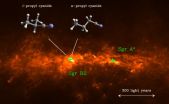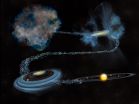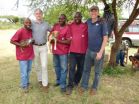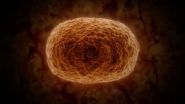(Press-News.org) NEW BRUNSWICK, N.J. – In a state famous for its turnpike and infamous for traffic, tolls and "Jersey drivers," a new partnership between the Rutgers-Eagleton Poll and Rutgers New Jersey Medical School (NJMS) has launched a series of public health polls with a survey about risky driving habits. New Jerseyans were asked about their perceptions of safety both as a driver and passenger.
"Three-quarters of New Jerseyans are behind the wheel nearly every day. They are continually at the center of jokes and have even been ranked as some of the worst drivers in the country," said David Redlawsk, director of the Eagleton Center for Public Interest Polling (ECIP) and professor of political science. "The 'Jersey Driver' ID implies a certain impatience and rudeness to those outside of the state, and perhaps risky driving behavior, which makes the stereotype a great place to start our new partnership."
As a passenger, about 90 percent of New Jerseyans rank reading as a driver's most dangerous activity, saying it would make them feel "very unsafe." A majority of residents also are concerned about the driver's cell phone use, although using a hands-free device significantly reduces concern. Eating or drinking by the drive makes just over half feel somewhat or very unsafe.
But respondents, when asked about their driving habits, admit to some of the same worrisome behaviors. Around half admit to at least occasionally eating, drinking or talking on a cell phone while driving. About 10 percent admit to sometimes reading phone messages or sending emails and text messages.
"In general, drivers are intolerant of behaviors perceived as risky or prone to cause distraction in other drivers, but many do engage in these behaviors themselves," said Andrea Marcus, an epidemiologist and assistant professor at the Rutgers School of Health Related Professions and the School of Public Health (SPH). "At the same time, virtually no residents admit to actually reading a book, newspaper or tablet while driving – perceived to be the most dangerous activity. And only 5 percent say they have nodded off at the wheel, even just briefly, in the past 30 days."
The Rutgers-Eagleton Health Series is collaboration between ECPIP (home of the Rutgers-Eagleton Poll) and NJMS. Driving questions were modeled after the National Highway Traffic Safety Administration's 2011 National Phone Survey on Distracted Driving Attitudes and Behavior and the 2011-2012 Behavioral Risk Factor Surveillance System survey. Results are from a statewide Rutgers-Eagleton Poll of 871 New Jerseyans contacted by live callers on both landlines and cell phones from July 28 to Aug. 5, 2014, with a margin of error of +/- 3.9 percentage points.
As passengers, New Jerseyans are cautious
As passengers, respondents say they would feel unsafe if a driver performed many of a list of potentially unsafe activities. Reading a book, newspaper, or tablet is seen as very unsafe by nearly all Garden Staters. Reading emails or text messages follows closely behind with 87 percent calling such activity very unsafe, with another 9 percent saying it is "somewhat unsafe." These passenger perceptions do not vary by how often residents are on the road as drivers.
Drivers talking on a hand-held cell phone ranked a distant third in terms of unsafe activities, but it is still considered at least very unsafe by nearly 60 percent of respondents and somewhat unsafe by another quarter. However, a plurality of residents (45 percent) has no problem when drivers use a hands-free device; just 17 percent think this is very unsafe, while 22 percent say somewhat unsafe. The most frequent drivers are the most accepting of hands-free calling.
As passengers, residents are most accepting of eating or drinking; this practice is called unsafe by just over half, though only 23 percent see eating and drinking as very unsafe. Everyday drivers are somewhat more accepting of drivers eating and drinking compared to other drivers.
"New Jerseyans are right to be concerned about these behaviors," said Marian Passannante, an epidemiologist and professor at NJMS and SPH, and coordinator of an injury research and prevention group. "According to a recent study published in the New England Journal of Medicine, the risk of a crash or near-crash among newly licensed drivers increases if they are dialing or reaching for a cell phone, sending or receiving text messages, or eating."
As drivers, New Jerseyans are less safety-conscious
As drivers, New Jerseyans admit to some of the activities that concern them as passengers. They are most guilty of the habit that causes them the least concern – eating and drinking. Twelve percent admit to partaking on most or all trips, while another 40 percent say they do it on at least some trips. Similarly, respondents say they make or accept calls while driving: 17 percent do it all or most of the time, while another 30 percent does so at least occasionally.
Texting and emailing appears to be much less infrequent among drivers: About three-quarters claim they never text or email. Moreover, virtually no one admits to reading a book or other material while driving. However, everyday drivers are more likely to engage in these activities, with the exception of reading. Five percent of all drivers admit to having nodded off.
Redlawsk, however, cautions about potential underreporting of risky behaviors by drivers. "The reality is that people will underreport behaviors they know to be undesirable," he said. "In particular, we suspect self-reporting of the most dangerous behaviors, like falling asleep or even texting and reading email, understates the truth. As passengers, New Jerseyans see the risk. As drivers, they don't want to admit to taking those risks."
"It is a real problem for everyone on New Jersey roads if even 10 percent of drivers read or send email or texts while driving," added William Halperin, a physician and professor and chair of the Department of Preventive Professor at NJMS and the associate dean of the Newark Campus of SPH. "And the fact that 5 percent of drivers report falling asleep at the wheel in the last month is concerning. Just imagine the consequences. Phone calls, texting and 'drowsy driving' can and should be eliminated."
INFORMATION:
Drivers admit to risky behaviors in RU-Eagleton, NJ Medical School public health poll
2014-09-25
ELSE PRESS RELEASES FROM THIS DATE:
Dunes reveal biodiversity secrets
2014-09-25
Ancient, acidic and nutrient-depleted dunes in Western Australia are not an obvious place to answer a question that has vexed tropical biologists for decades. But the Jurien Bay dunes proved to be the perfect site to unravel why plant diversity varies from place to place. Smithsonian Tropical Research Institute scientist Benjamin Turner and colleagues from the University of Western Australia published findings in the Sept. 26 edition of Science showing that environmental filtering—but not a host of other theories—determines local plant diversity in one of Earth's biodiversity ...
Tropical disease prevalence in Latin America presents opportunity for US
2014-09-25
HOUSTON – (Sept. 25, 2014) – Recently published prevalence estimates of neglected tropical diseases (NTDs) in five Latin American countries — Bolivia, Cuba, Ecuador, Nicaragua and Venezuela — could suggest a new direction for United States foreign policy in the region, according to a tropical-disease expert at Rice University's Baker Institute for Public Policy.
Dr. Peter Hotez, the fellow in disease and poverty at the Baker Institute, outlined his insights in a new editorial, "The NTDs and Vaccine Diplomacy in Latin America: Opportunities for United States Foreign Policy," ...
Stem cell transplant does not cure SHIV/AIDS after irradiation of infected rhesus macaques
2014-09-25
A study published on September 25th in PLOS Pathogens reports a new primate model to test treatments that might cure HIV/AIDS and suggests answers to questions raised by the "Berlin patient", the only human thought to have been cured so far.
Being HIV-positive and having developed leukemia, the Berlin patient underwent irradiation followed by a bone-marrow transplant from a donor with a mutation that abolishes the function of the CCR5 gene. The gene codes for a protein that facilitates HIV entry into human cells, and the mutation—in homozygous carriers who, like the donor, ...
Interstellar molecules are branching out
2014-09-25
Scientists from the Max Planck Institute for Radio Astronomy (Bonn, Germany), Cornell University (USA), and the University of Cologne (Germany) have for the first time detected a carbon-bearing molecule with a "branched" structure in interstellar space. The molecule, iso-propyl cyanide (i-C3H7CN), was discovered in a giant gas cloud called Sagittarius B2, a region of ongoing star formation close to the center of our galaxy that is a hot-spot for molecule-hunting astronomers. The branched structure of the carbon atoms within the iso-propyl cyanide molecule is unlike the ...
Stone Age site challenges old archaeological assumptions about human technology
2014-09-25
The analysis of artifacts from a 325,000-year-old site in Armenia shows that human technological innovation occurred intermittently throughout the Old World, rather than spreading from a single point of origin, as previously thought.
The study, published today in the journal Science, examines thousands of stone artifacts retrieved from Nor Geghi 1, a unique site preserved between two lava flows dated to 200,000–400,000 years ago. Layers of floodplain sediments and an ancient soil found between these lava flows contain the archaeological material. The dating of volcanic ...
Earth's water is older than the sun
2014-09-25
Washington, D.C.—Water was crucial to the rise of life on Earth and is also important to evaluating the possibility of life on other planets. Identifying the original source of Earth's water is key to understanding how life-fostering environments come into being and how likely they are to be found elsewhere. New work from a team including Carnegie's Conel Alexander found that much of our Solar System's water likely originated as ices that formed in interstellar space. Their work is published in Science.
Water is found throughout our Solar System. Not just on Earth, but ...
Agonizing rabies deaths can be stopped worldwide
2014-09-25
The deadly rabies virus--aptly shaped like a bullet-- can be eliminated among humans by stopping it point-blank among dogs, according to a team of international researchers led by the Paul G. Allen School for Global Animal Health at Washington State University.
Ridding the world of rabies is cost-effective and achievable through mass dog vaccination programs, the scientists report in a paper that appears in the Sept. 26 issue of Science magazine. What's more, they write, because infections occur as a result of interactions between animals and people, a "One Health" approach ...
Heritage of Earth's water gives rise to hopes of life on other planets
2014-09-25
A pioneering new study has shown that water found on Earth predates the formation of the Sun – raising hopes that life could exist on exoplanets, the planets orbiting other stars in our galaxy.
The ground-breaking research set out to discover the origin of the water that was deposited on the Earth as it formed.
It found that a significant fraction of water found on Earth, and across our solar system, predates the formation of the Sun. By showing that water is 'inherited' from the environment when a star is born, the international team of scientists believe other exoplanetary ...
Harvesting hydrogen fuel from the Sun using Earth-abundant materials
2014-09-25
VIDEO:
Science published on Sept. 25, 2014 the latest developments in Michael Grätzel's laboratory at EPFL in the field of hydrogen production from water. By combining a pair of perovskite solar...
Click here for more information.
The race is on to optimize solar energy's performance. More efficient silicon photovoltaic panels, dye-sensitized solar cells, concentrated cells and thermodynamic solar plants all pursue the same goal: to produce a maximum amount of electrons ...
Innovative Stone Age tools were not African invention, say researchers
2014-09-25
A new discovery of thousands of Stone Age tools has provided a major insight into human innovation 325,000 years ago and how early technological developments spread across the world, according to research published in the journal Science.
Researchers from Royal Holloway, University of London, together with an international team from across the United States and Europe, have found evidence which challenges the belief that a type of technology known as Levallois – where the flakes and blades of stones were used to make useful products such as hunting weapons – was invented ...




